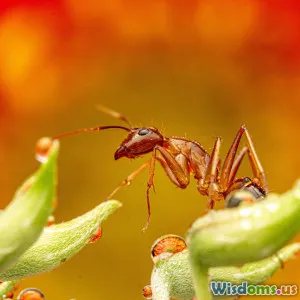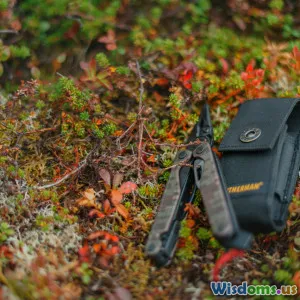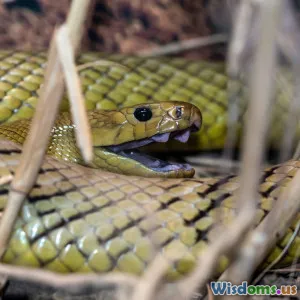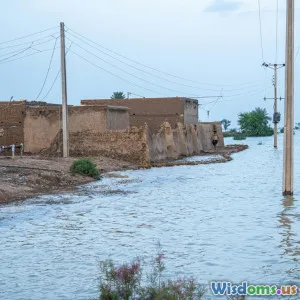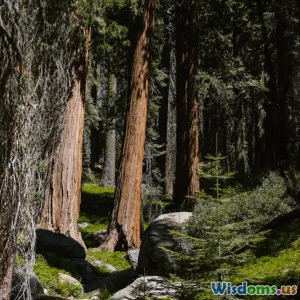
Debunking the Myth Moss Always Grows on the North Side of Trees
9 min read Discover why the common belief that moss always grows on the north side of trees is a myth, supported by science and real-world observations. (0 Reviews)
Debunking the Myth: Moss Always Grows on the North Side of Trees
Introduction
Moss growing on the north side of trees is one of those widely accepted pieces of lore that many people have heard since childhood. This assumption has become so entrenched that it is often used in wilderness survival guides to help determine direction when lost. But how much of this popular notion is fact, and how much is fiction? In reality, moss growth is influenced by a variety of environmental factors—not strictly by cardinal direction. In this detailed article, we’ll dissect the biology and environmental science behind moss growth, examine real-world evidence, and reveal why this myth doesn’t hold up to scrutiny.
Understanding Moss Ecology and Growth Patterns
What Is Moss and How Does It Grow?
Mosses are part of the bryophyte family—small, non-vascular plants that thrive in moist environments. Unlike vascular plants, mosses don’t have a complex transport system for water and nutrients, which means they rely heavily on their immediate environment to provide the moisture and shade they need.
They reproduce via spores and tend to populate surfaces that can retain moisture such as rocks, soil, and tree bark. The texture and porosity of the surface can significantly impact moss colonization. Furthermore, many moss species prefer shaded, damp areas where evaporation rates are lower.
The Environmental Factors Affecting Moss Growth
Moss growth depends on several ecological variables, including:
- Light Exposure: Moss thrives in low-light or shaded environments because high exposure to sunlight dries it out.
- Moisture Levels: Consistent humidity and surface moisture are essential for moss survival.
- Temperature: Cool, moderate temperatures promote moss growth, while extreme heat or frost can hinder it.
- Wind and Shelter: Protection from wind that can dry moss surfaces affects sustainability.
- Bark Texture and Chemistry: Some tree species provide better habitats for moss due to bark traits.
The North Side Myth: Origins and Spread
The Rationale Behind the Myth
The hypothesis that moss grows predominantly on the north side of trees originated from observations in the Northern Hemisphere, where the north side of trees typically receives less direct sunlight. Consequently, this side often stays damper and cooler, conditions generally favorable to moss establishment.
Early naturalists and explorers noticed this trend and passed it along as an easy natural compass in dense forests, especially before modern tools were common.
How Has This Myth Been Used?
Today, outdoor survival manuals often suggest that beginners use this trick to find north if lost. Numerous blogs, social media posts, and popular science sites repeat this factoid with little caveat. It’s presented as a dependable shortcut to orientation.
Scientific Studies and Observations Challenging the Myth
Studies on Moss Orientation Around the World
Empirical studies conducted in various forest ecosystems globally have shown that moss does not always favor the north side of trees. For instance:
- A 2009 study in the Appalachian region found moss distributed more evenly around tree trunks, strongly influenced by the microenvironment such as local shade from other trees rather than a consistent north-side preference.
- Research in the Pacific Northwest rainforest reported moss thriving on all sides of a tree, depending on local sunlight and humidity patterns.
Variability by Region and Tree Species
Factors such as latitude, altitude, the species of tree, and the surrounding forest density can drastically alter conditions that encourage moss growth. In some southern hemisphere locales, the south side of trees may more commonly harbor moss due to differing sun angles.
Bark texture also plays a pivotal role. Rough-barked trees trap more moisture and provide better anchoring for moss. Thus, in localities dominated by species with smooth bark, moss presence may be inconsistent regardless of direction.
Statements from Experts
Dr. Stephanie Smith, an ecologist at the University of Vermont, notes:
“While moss growth is sensitive to moisture and light, the idea that moss strictly grows on the north side is a simplification. It’s more about the microclimate around the tree than cardinal orientation.”
This expert insight underscores the need to consider multiple environmental variables rather than relying on broad heuristics.
Practical Considerations for Using Moss as a Navigational Tool
Limitations of the Moss Compass Method
- Inconsistent Directionality: Because moss growth depends on local shade and humidity, it is unreliable for consistent orientation.
- Habitat Variation: Urban parks, managed forests, or heavily disturbed ecosystems may display moss patterns incredibly differently.
- Seasonal Changes: Moss can desiccate or grow unevenly based on season, disrupting patterns.
Complementary Navigational Techniques
Experienced survivalists advise combining moss observation with other natural cues:
- Position of the sun and shadows.
- Growth patterns of lichens and other organisms.
- Topography and known regional landmarks.
Despite its limitations, moss can offer clues when integrated thoughtfully with other methods.
Beyond Navigation: Why Moss Distribution Matters Ecologically
Studying where moss grows on trees also informs scientists about microhabitat diversity, moisture retention in forests, and ecosystem health.
Furthermore, mosses contribute to soil formation, nutrient cycling, and provide habitats for microfauna. Understanding the nuanced growth of moss is important not just for myth-busting but for appreciating complex ecological interactions.
Conclusion
The widespread belief that moss exclusively or predominantly grows on the north side of trees is an oversimplification that fails to capture moss ecology's environmental complexity. While northern exposure in the Northern Hemisphere can sometimes favor moss growth due to reduced sunlight and higher moisture retention, many other factors—such as localized shade, humidity, tree species, and regional climate—play critical roles in where moss thrives.
Relying solely on moss for navigation is risky and often misleading. Outdoor enthusiasts and learners should integrate multiple natural indicators and modern tools for accurate orientation. Ultimately, this myth serves as a reminder to question commonly held wisdom and appreciate the fascinating complexity of nature’s patterns.
By understanding and respecting the full range of factors influencing moss growth, we foster better environmental literacy and a deeper connection to our natural world.
References
- Glime, J.M. (2007). Bryophyte Ecology. Volume 1. Physiological Ecology.
- Barry, C.J., & Ellefson, S. (2009). "Moss Growth Patterns and Indicator Validity in Appalachian Forests." Journal of Ecology Studies.
- University of Vermont. (2020). Interview with Dr. Stephanie Smith, Bryophyte Ecologist.
- Outdoor Survival Magazine. (2020). "Navigating Wilderness with Moss: Myths and Facts."
Rate the Post
User Reviews
Popular Posts











